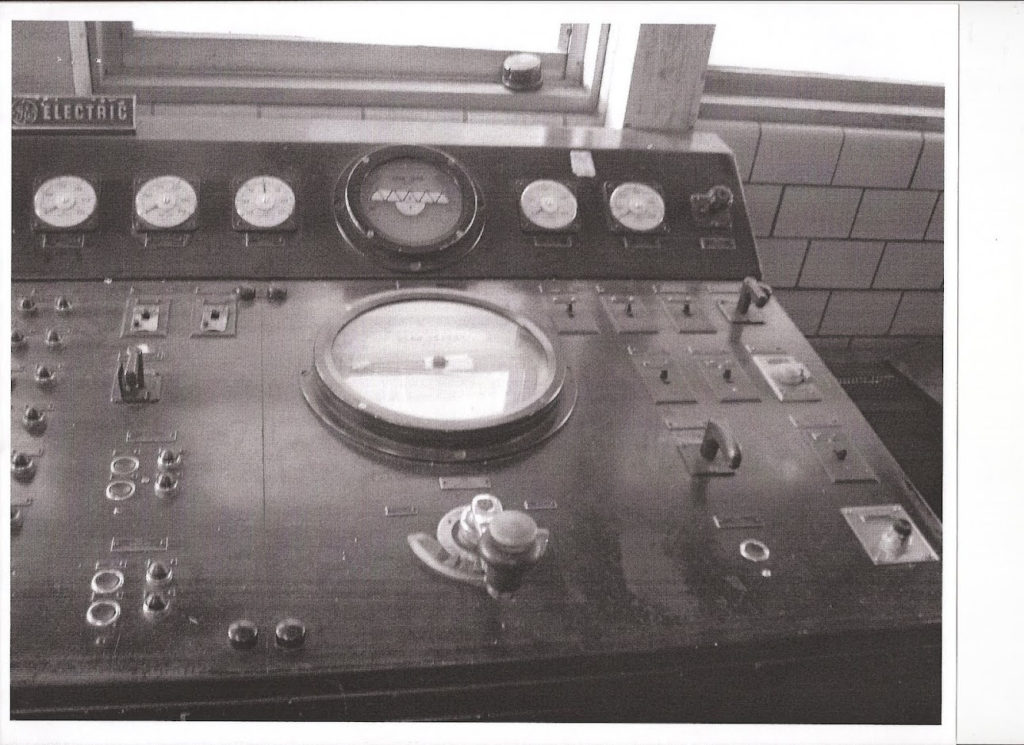Monday, May 2, 2022 – You did not social media to excite New Yorkers of these performers


MONDAY, MAY 2, 2022
664th Issue
Fabulous Actresses
who captured
New York:
Jennie Lind & Sara Bernhardt
Stephen Blank
In the 1850s, while the crisis over the future of slavery and of “these” (not yet “the”) United States deepened, much of the country enjoyed an economic boom – or more precisely, a wealthy class had emerged in major cities supported by a new upwardly mobile middle class. In New York City, this transformation was colored by the beginning of more modern theater and of a culture hunger (recall P.T. Barnum’s American Museum). With cheap newsprint competing for readers, New Yorkers were enthralled by famous and talented (and of course, often scandalous) women. And we were most fascinated by European imports. In this brief piece, I’ll introduce you to two of the most illustrious of these imported flowers – Jennie Lind and Sara Bernhardt – who graced our city’s stages and won New York’s heart.

Soprano Jenny Lind by Eduard Magnus, 1862 Johanna Maria “Jenny” Lind was the first of these European visitors who swept into the City. Born in Stockholm 1820, Lind was an illegitimate child of a bookkeeper and a schoolteacher. She began to sing onstage when she was 10 and became famous throughout the country; at 20, she was a member of the Royal Swedish Academy of Music and court singer to the King of Sweden and Norway. Known as the “Swedish Nightingale”, Lind was one of the most highly regarded singers of the 19th century, performing opera in Sweden and across Europe. Among her early admirers were Robert Schumann, Hector Berlioz and Felix Mendelssohn – and, after a concert in Copenhagen, Hans Christian Anderson. Queen Victoria attended every one of Lind’s sixteen debut performances in London in 1847.
In 1849, when Lind was in the middle of her third triumphant London season, P. T. Barnum learned of the large audiences she attracted. He had toured Europe in 1845 and 1846 with General Tom Thumb, always searching for new attractions. Barnum had never seen Lind (he had no idea what she looked like) or heard her sing, but he believed sponsoring this Swedish musical star – with, moreover, a reputation for philanthropy – would be a hit in New York.
Lind finally accepted Barnum’s offer of $1,000 a night (plus expenses) for up to 150 concerts in the United States. All told, Barnum committed to $187,500 (approximately $5,833,000 today) to bring Lind and her musical troupe to America. Her tour began in September 1850 and continued to May 1852.
Barnum’s publicity blitz didn’t wait for Lind’s arrival. He made her a celebrity before anyone in New York had seen or heard her – what the press called “Lind Mania”. Tickets for her first concerts were in such demand that Barnum sold them by auction. Barnum marketed all sorts of Jenny Lind-branded products, including songs, clothes, chairs and pianos. Soon, others jumped in– Jenny Lind shirts, Jenny Lind cravats, Jenny Lind gloves, Jenny Lind pocket handkerchiefs, Jenny Lind coats, Jenny Lind hats, and even Jenny Lind sausages.

https://cronhill.de/en/blog/swedish-nightingale-jenny-lind.html
The New York Herald reported on “the spectacle of some thirty or forty thousand persons congregated on all the adjacent piers” when her ship docked. (Ten times more than met the Beatles in 1964.) Lind kissed her hand to the US flag and exclaimed, “There is the beautiful standard of freedom, which is worshipped by the oppressed of all nations.” She further endeared herself to the crowd by stopping Barnum’s coachman from clearing a path through the throng with his whip.
Almost 5000 tickets were sold for the first concert at a total price of $24,500, with the theatre “packed to its utmost capacity”. When Lind realized how much Barnum stood to make, she renegotiated their contract, giving her now the original $1,000 per concert agreed to, plus the remainder of each concert’s profits after Barnum’s $5,500 concert management fee was paid. Her interest in increasing her earnings was, it seems, genuinely motivated by her determination to accumulate as much money as possible for her chosen charities.

Jenny Lind the Swedish Nightingale. Poster from the collection of the University of Sheffield. Wikipedia
After her performances in New York, Lind’s party toured the east coast of America (in the first private rail car), and on to Cuba, the Southern US and Canada. By early 1851, Lind had become uncomfortable with Barnum’s relentless marketing, and she invoked a contractual right to sever her ties with him; they parted amicably. She continued the tour for nearly a year, under her own management, until May 1852.
Under Barnum’s management, Lind gave 93 concerts in the US earning about $350,000 ($10.9 million in 2021 $). She donated her profits to various charities, including free schools in Sweden and some US charities.
Lind was the first of the European transplants. Her soprano voice resonated across the country. She was known for her philanthropy and generous spirit; Church leaders praised her. Our second European visitor, Sarah Bernhardt, could not have been more different. Priests gave sermons denouncing her. While Lind devoted herself to good causes, Bernhardt’s scandalous life screamed from the press around the world. Lind married and lived quietly, while Bernhardt reinvented herself as a public icon, allowing the romances and tragedies of her stage heroines to reflect her own life.

https://www.thoughtco.com/biography-of-sarah-bernhardt-4171973
Sarah Bernhardt [1844—1923] was the daughter of a Dutch courtesan who catered to a wealthy clientele. In a career spanning over 60 years, she was viewed as one of the greatest actresses of all time and the first international stage star. Bernhardt performed in Europe, the United States, Canada, South America, Australia, and the Middle East. She managed several theaters in Paris. Mark Twain said of her, “There are five kinds of actresses: bad actresses, fair actresses, good actresses, great actresses, and Sarah Bernhardt.” In France, she was viewed as a national institution – “to criticize her is like criticizing the tomb of Napoleon.” Oscar Wilde cast an armful of lilies at her feet and hailed her as the “Divine Sarah.”
As a young woman, she was encouraged by family friend Alexandre Dumas and supported by her mother’s lover, the Duc de Morny, to join the theater and soon found success. Thin, with a boyish figure, she did not meet the voluptuous standards of the era. Other actresses were more beautiful, but Bernhardt’s presence transcended her art.

Sarah Bernhardt poses next to a bust of herself sculpted by Mathieu-Meusnier in 1869. Melandri/Getty Images
“She possessed an aura of power equaled by no other monstre sacré before or since. Her bizarreries, her scandalous entanglements, enhanced the legend. Her motto, embroidered on her linens, printed on her visiting cards, and engraved on her richly embossed revolver, was Quand Même, which means ‘in spite of everything’ and suggests a defiant ‘damn the consequences.’”

https://www.discoverwalks.com/blog/paris/the-dazzling-life-of-french-actress-sarah-bernhardt/
She toured around the world for decades, first performing in New York City in 1880. In New York, advance publicity stirred enormous interest in this woman who was said to keep a tiger cub as a household pet and sleep in a satin-lined coffin (one true, the other not). Anonymous pamphlets appeared—one, “The Love Affairs of Sarah Bernhardt”, accused her of bearing four bastards sired by the czar of Russia, Emperor Napoleon III, Pope Pius IX, and a man guillotined for murdering his father. “Absurd,” Bernhardt remarked, “but it would be better than to have four husbands and no children, like some women in this country!” Clergymen denounced this “monster of the Apocalypse” and threatened theatergoers who saw her with eternal damnation. In Orange, New Jersey, mothers convened to mount a campaign “against this European courtisane who is coming over to corrupt our sons.”
With seats priced at the then outrageous rates of ten, fifteen, and twenty-five dollars, lines to the Booth Theater at Sixth Avenue and Twenty-third Street circled the block. Long before curtain time on opening night the house was sold out. Her most famous role was as the tuberculous courtesan Marguerite Gauthier in Alexandre Dumas fils’s La Dame aux Camélias. She portrayed Marguerite first in New York on November 16, and thereafter some three thousand times.
Throughout Europe, Russia, and North and South America, Bernhardt received from the public (if not the clergy) the kind of homage usually reserved for royalty. Today it may seem inconceivable that a stage actor could attain this level of fame, but in the 19th century theater was the only game in town. Rich and poor alike attended live performances several times a week. London, New York, and Paris drew up to 18 million theatergoers a year. Small towns had theaters too, and the biggest stars traveled to them. One of Bernhardt’s tours included a stop in Muskogee, Oklahoma. In March 1906 she performed in a huge tent seating 5000 in Kansas City, Missouri, and in Dallas and Waco, Texas. She performed for the prisoners at San Quentin Prison.

Sarah Bernhardt by photographer Sarony, 1880 – WikiCommons
She did not back down. When J. P. Morgan learned of Bernhardt’s impending visit to his library on New Year’s Day 1911, he growled, “Actresses are not welcome,” and stalked out. Bernhardt was still there when Morgan returned. She seized him by the necktie and declared, “When I speak, men listen.” The old titan melted, and they remained friends until his death two years later.
Other Europeans would follow – Garbo, Dietrich – but none would turn New York upside down like Lind or Bernhardt.
Stephen Blank
RIHS
April 21, 2022
NEW DATE IS THURSDAY, MAY12 AT 6:30 PM.
LIVE AT THE NYPL ROOSEVELT ISLAND BRANCH
OR ON ZOOM
REGISTRATION REQUIRED FOR ZOOM
https://www.nypl.org/events/programs/2022/04/28/rihs-lecture-chandigarh-city-beautiful


https://www.nypl.org/events/programs/2022/04/28/rihs-lecture-chandigarh-city-beautiful
THIS IS AN IN-PERSON PROGRAM & REGISTRATION REQUIRED FOR ZOOM
MONDAY PHOTO OF THE DAY
Send your answer to:
rooseveltislandhistory@gmail.com

WEEKEND PHOTO OF THE DAY
Control Panel on the Welfare Island Bridge
When the original panel was removed, parts of it were mounted and donated to the RIHS in 2010.
ED LITCHER GOT IT RIGHT.




Sources
https://cronhill.de/en/blog/swedish-nightingale-jenny-lind.html
https://womencelebritiesrememberedforgotten.blogspot.com/2021/01/female-celebrity-of-1850s-duel-between.htmlhttps://www.americanheritage.com/bernhardt-americahttps://www.nypl.org/events/exhibitions/galleries/performance/item/10096
https://www.thoughtco.com/biography-of-sarah-bernhardt-4171973
https://www.vox.com/the-highlight/2019/6/11/18644296/sarah-bernhardt-celebrity-fame
Edited by Deborah Dorff
ALL PHOTOS COPYRIGHT RIHS. 2022 (C)
PHOTOS IN THIS ISSUE (C) JUDITH BERDY RIHS
All image are copyrighted (c) Roosevelt Island Historical Society unless otherwise indicated
FUNDING PROVIDED BY ROOSEVELT ISLAND OPERATING CORPORATION PUBLIC PURPOSE GRANTS CITY COUNCIL REPRESENTATIVE BEN KALLOS DISCRETIONARY FUNDING THRU DYCD
Copyright © 2022 Roosevelt Island Historical Society, All rights reserved.Our mailing address is:
rooseveltislandhistory@gmail.com



Leave a comment